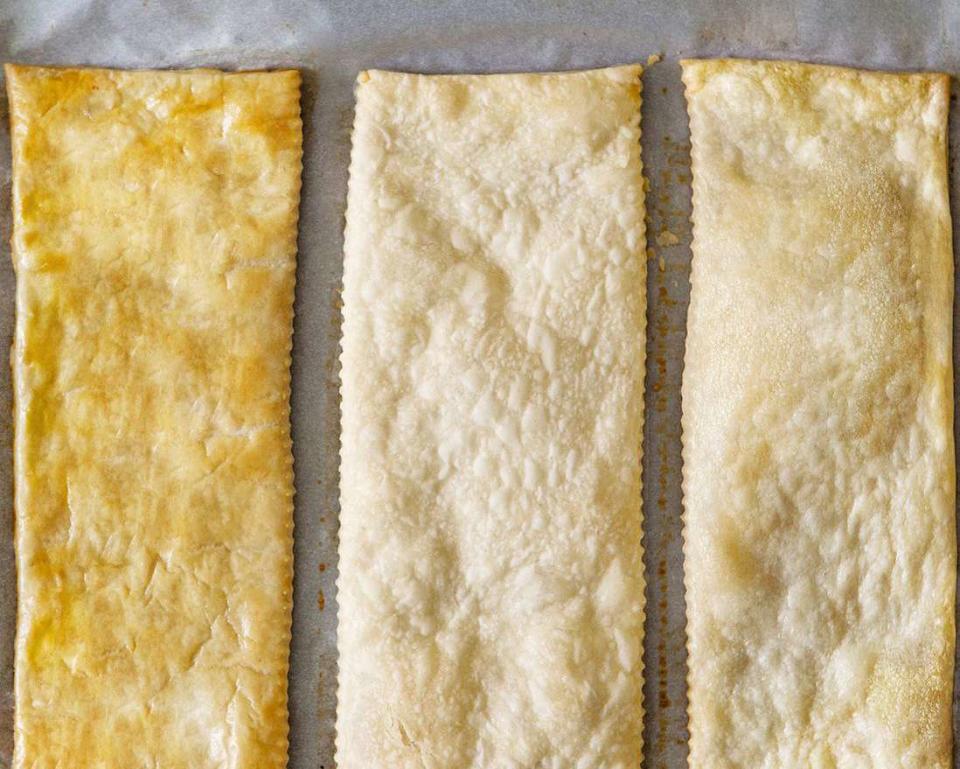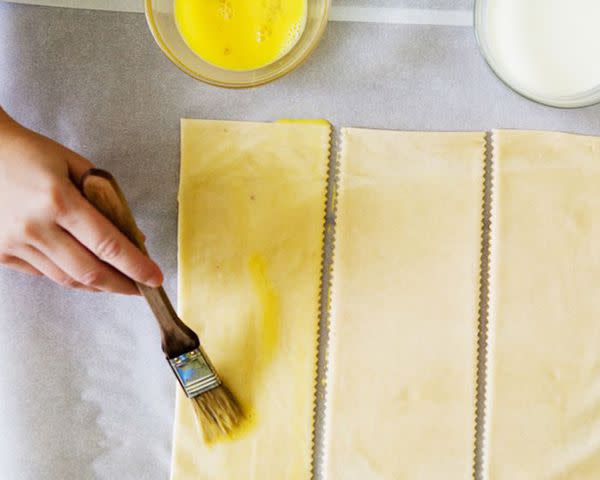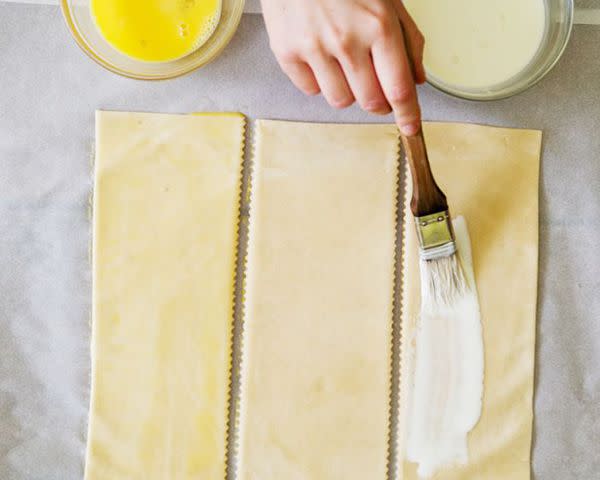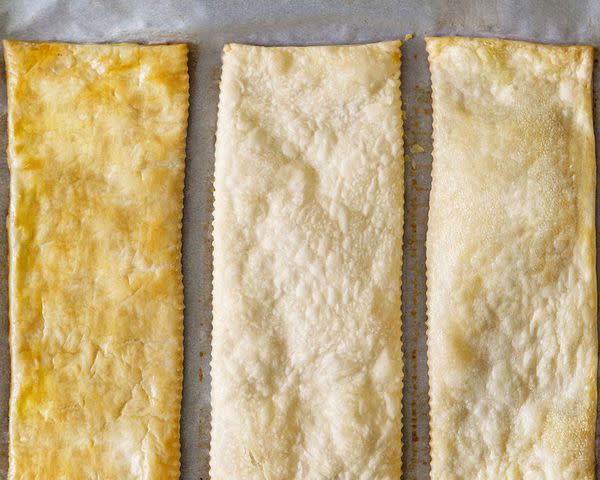Why You Should Always Use an Egg Wash or Cream Wash on Your Pies—and the Best Way to Do It
This simple technique helps you get a perfect, golden brown pastry crust every time.

Steven Karl Metzer
The process of making a pie from scratch is certainly a rewarding one. And as with anything you bake, the preparation and process is crucial to the outcome. You've spent time and effort putting the pastry together, so don't sell yourself short by skipping the final step—the egg wash for the pie crust. The truth is that cream and egg washes are a simple but vital step to improving the appearance and flavor of pies and other baked goods. Learn which type of pie crust wash to use based on your recipe and how to apply it for a beautiful, golden top.
Related: 12 Decorative Pie Crusts That Will Wow the Crowd
What Is a Wash—and Why Pies Need One
A wash is a liquid brushed on the dough right before baking. It is typically made from either a beaten egg thinned with water or heavy cream.
Pies with a top crust or lattice top will typically call for an egg or cream wash to be brushed onto the dough. The type of wash you use is what will give the baked pie a polished finish. It's also the perfect "glue" for holding sugar that's sprinkled on the crust or seeds on top of a loaf of bread.
Types of Wash and the Finish They Give
The variety of pie wash combinations will give your crust a different finish.
An Egg or Cream Wash
An egg wash will give your pie crust a glossy finish. A cream wash will give your pie crust more of a semi-golden, matte-like finish. Skipping a wash altogether can leave your crust looking stark.
Melted Butter
Another option is brushing with melted butter as a finishing touch. Is it better to use an egg wash or butter on your pie crust? We are Team Egg Wash (or Cream Wash). While melted butter adds more flavor than the washes, it is less effective in look; it gives a speckled appearance to pastry. But, if you plan to sprinkle the crust with sugar, melted butter could be a good choice—the sugar will hide the speckles, and the combination of butter and sugar is delicious.
Whatever look you are going for, do yourself a favor, and don't skip this final preparation step for pies (and other baked goods).
How to Make an Egg Wash

Steven Karl Metzer
The general rule of thumb for an egg wash is one well-beaten whole egg plus one to two tablespoons of water. More water will lighten the golden color, or for a shinier pie, you can substitute the water with cream or milk. Sometimes, an egg wash is made with just yolks for extra color—or just whites for extra shine.
How to Make a Cream Wash

Steven Karl Metzer
For a cream wash, use heavy cream or half-and-half. Half-and-half will produce a similar result to using heavy cream.
When to Apply the Wash
No matter which type of wash you chose, a wash should always be applied just before the pie goes into the oven.
How to Apply a Wash
A wash is brushed onto the pastry and the best tool for this is a pastry brush, specifically a silicone pastry brush; it is easier to clean than a natural bristle brush.
The finished versions after baking for comparison, from left to right: egg wash, no wash, and cream wash.

Steven Karl Metzer
Read the original article on Martha Stewart.

